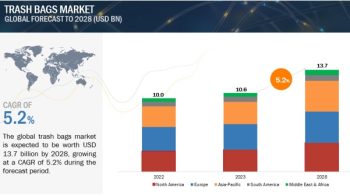
According to the new market research report “Synchronous Condenser Market by Cooling Type (Hydrogen, Air, Water),Type (New & Refurbished), Starting Method (Static Frequency Converter, Pony Motor), End User (Electrical Utilities & Industries), Reactive Power Rating, and Region-Global Forecast to 2025 “, published by MarketsandMarkets™, the global Synchronous Condenser Market is projected to reach USD 574.0 million by 2025 from an estimated USD 508.4 million in 2020, at a CAGR of 2.5% during the forecast period. Long service life, growth of the renewable energy sector, and an increasing need for power factor correction are driving the growth of the global industry.
Electric utilities are the leading end-users of synchronous condensers and are expected to lead the market throughout the forecast period
Electric utilities have been historically the largest users of power factor correction equipment. Industries employ synchronous condensers only when the requirement for power factor correction is high, and the power transmission is over a long distance. Mining and metal processing industries have been the largest users of synchronous condensers, but their share is low as compared with electric utilities. Hence, the market for electric utilities will remain dominant and grow at a faster rate during the forecast period.
Download PDF Brochure:https://www.marketsandmarkets.com/pdfdownloadNew.asp?id=189197147
Static frequency converter segment is expected to lead the Synchronous Condenser Market by starting method
Static frequency converters provide superior control for starting synchronous condensers compared with pony motors. Pony motors are preferred for small-sized condensers. Static frequency converters offer better precision and capability to start multiple condensers. Owing to these factors, static frequency converters are expected to lead the market segment and grow at the fastest rate within all the segments.
Hydrogen cooling segment is expected to capture the major share of the Synchronous Condenser Market by cooling type
Hydrogen-cooled synchronous condensers are the largest segment and are expected to grow faster than other cooling methods. It is the preferred method of cooling employed for medium- to large-sized synchronous condensers. The key driving factor will be the installation of medium- to large-sized synchronous condenser units between 100 and 300 MVAr across the regions.
Synchronous condensers rated above 200 MVAr are expected to capture the major share of the Synchronous Condenser Market by reactive power rating
With the rising need for power factor correction, demand for synchronous condensers is expected to grow, especially for condensers rated above 200 MVAr. This is evident from the contracts that have been executed from 2016 to 2020. This may be attributed to the rising demand for reactive power to stabilize the grid and maintain voltage regulation.
Request Sample Pages: https://www.marketsandmarkets.com/requestsampleNew.asp?id=189197147
North America is expected to dominate the global Synchronous Condenser Market
Rising demand for synchronous condensers in Canada, especially new installations and conversion of old power plants to synchronous condensers in the US is anticipated to drive the Synchronous Condenser Market in North America. Many thermal power plants are being shut down in the U.S. to curb pollution and promote renewable power generation. This is also likely to create a huge demand for synchronous condensers in the region.
To enable an in-depth understanding of the competitive landscape, the report includes profiles of some of the leading players, such as Siemens (Germany), GE (US), Eaton (Ireland), ABB (Switzerland), and WEG (Brazil) along with other prominent manufacturers of synchronous condensers.


